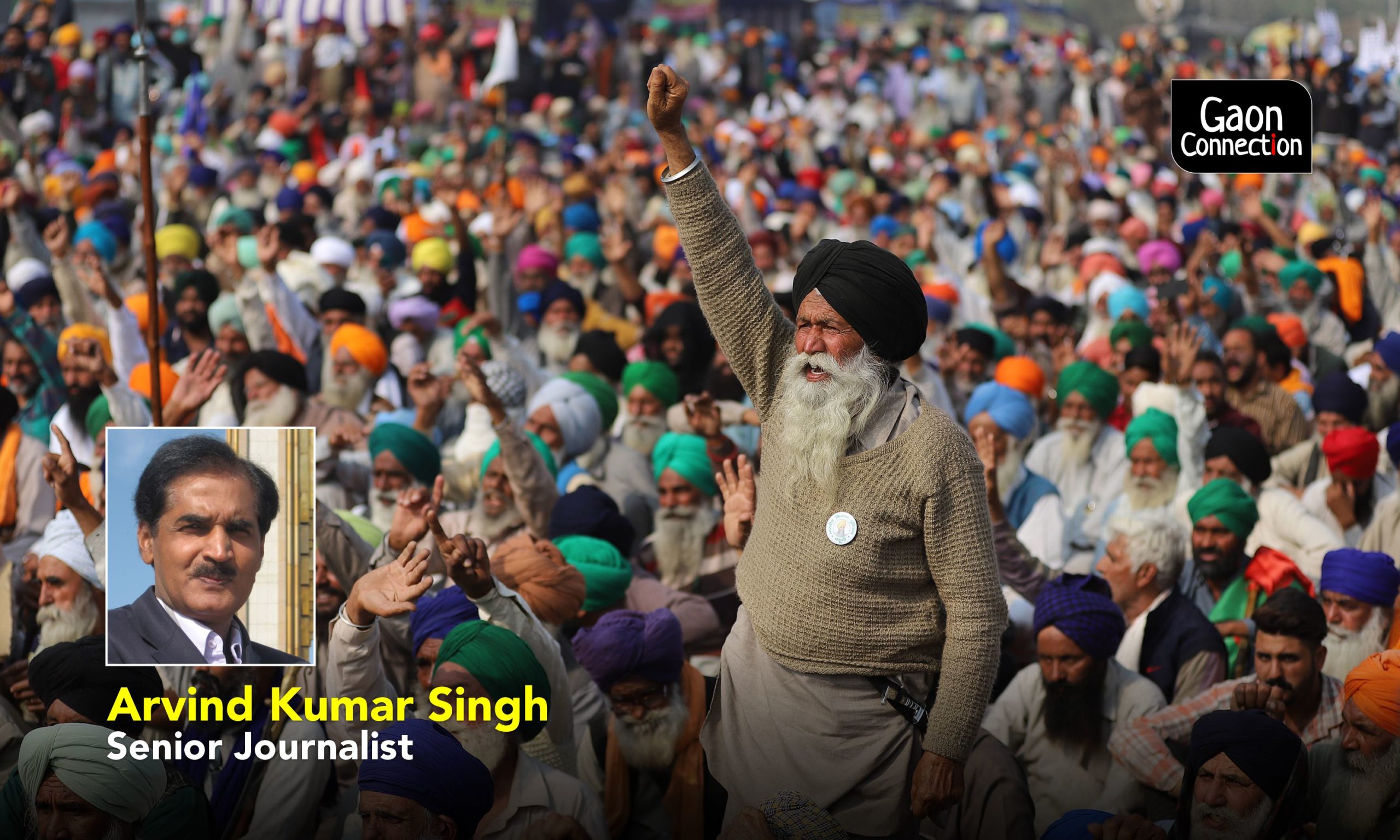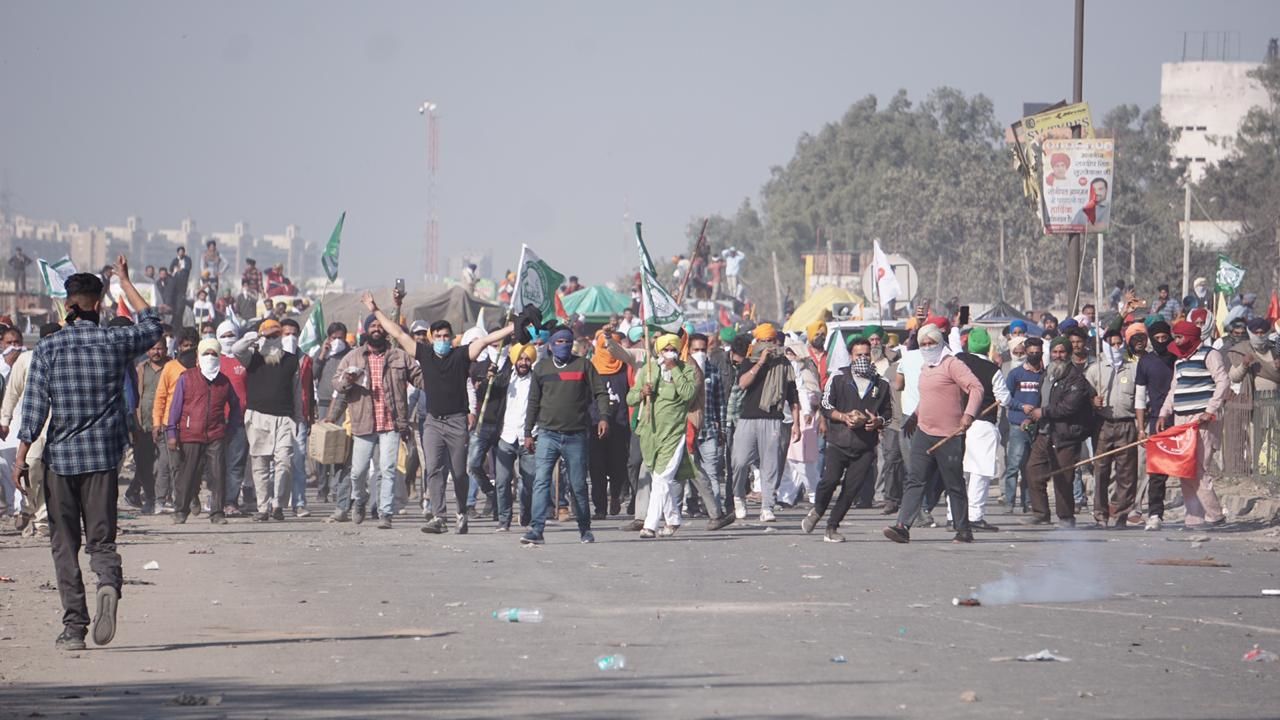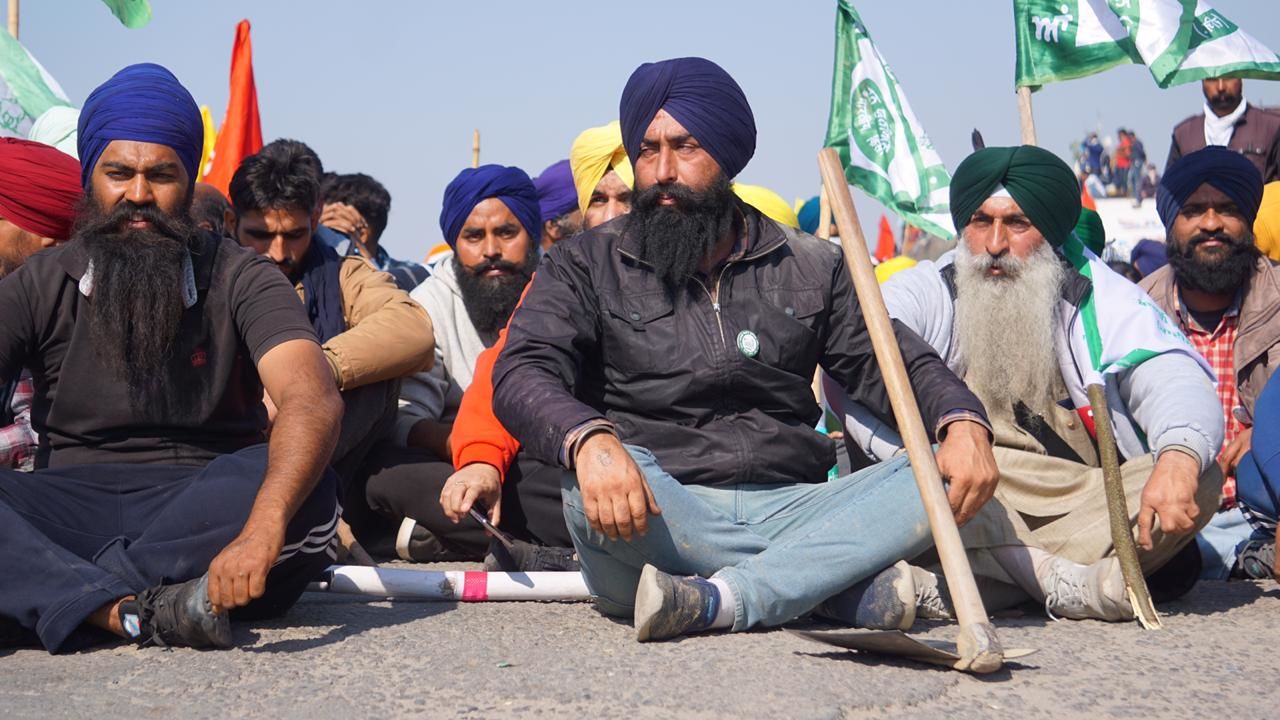Farmers Fury: Why the ongoing farmers’ protest evoke a sense of déjà vu and what lies ahead
When will the current farmers’ agitation end? Where will this protest on the roads reach? And why does it remind one of the farmers' agitation led by Chaudhary Mahendra Singh Tikait in 1988 and 1989?

In 1988 and 1989, the huge farmers’ agitation led by Chaudhary Mahendra Singh Tikait in Delhi, Meerut and western Uttar Pradesh shook the Congress government in the Centre, led by Rajiv Gandhi. Today, something similar is playing out between the farmers of Punjab and the National Democratic Alliance (NDA) government in the Centre led by Narendra Modi of the BJP.
The only difference is that the current protest does not ride upon a political heavyweight like Tikait. Nonetheless, numerous new faces and the concept of collective strength have provided a new dimension to the present movement that centres around the common farmers. Deriving strength from their issues, discipline and grit, farmers’ organisations from across the country are either moving towards Delhi or supporting the agitation.
The Modi government seems worried about the agitation. All the initial propaganda against this agitation by pro-government outfits in the form of unrestrained allegations has stopped. Every Union minister, from the home minister to agriculture minister Narendra Singh Tomar, has publicly acknowledged the protest as a farmers’ agitation. The government has finally set out to persuade the protesting farmers through dialogue and discussion. But it is true that it had blatantly ignored the agenda of all previous farmers’ protests.
The current scenario is reminiscent of the farmers’ agitation of 1988-89. Both movements share a common background. Then, the government’s indifference and arrogance towards farmers was decimated by farmers under the leadership of Tikait, who emerged as a force of immense reckoning in India’s farmer politics.
On January 27, 1988, farmers led by Tikait undertook a 25-day siege of Meerut Commissionerate. Millions of farmers turned Tikait into ‘Mahatma Tikait’. Following the movement, farmers’ organisations from across the country formed a coordination committee and presented themselves with a national identity.

From October 25 to 31, farmers from all parts of the country joined a massive rally at the Boat Club in Delhi. It gained worldwide attention. In that unique farmers’ renaissance, the Government of India and the various state governments involved were forced to recognise and consider farmers’ demands. The agitation also sealed the fate of the Rajiv Gandhi government, sending it out of power.
This time, the agitation has been initiated by the farmers of Punjab and Haryana, who are considered more prosperous than farmers in other states. The recent agricultural laws also affect them the most, and they were the first to oppose this from the ordinance stage. At that time, the government least expected the farmers’ protests to gain national importance.
The unity and mutual understanding that the farmers of Punjab and Haryana have shown on the issue of the three agricultural laws have helped the agitation gain momentum and widespread support.
The Centre has taken several steps in the interest of farmers over the years and gained political leverage with measures such as doubling farmers’ income, soil health cards, crop insurance and Kisan Samman Nidhi. However, pushing into existence the three agricultural laws during the coronavirus crisis without extensive dialogue or deliberations has sown the seed of mistrust in the minds of distressed farmers.

These apprehensions now can only be addressed through dialogue and legislative measures. The farmers’ demands were raised in Parliament by several political parties, including pro-NDA parties.
During the debate on the agriculture bills in both Houses of Parliament, the opposition had sought the bills to be forwarded to the standing committees in order to avoid hasty approval. Some MPs (members of Parliament) were also of the view that in order to bring in comprehensive agricultural reforms, the government must resist making any move without proper communication with the states.
The Government also ignored the demand of a clear provision in the bill, guaranteeing procurement at MSP [minimum support price] and assurance that the Mandi system would continue to function like before. The MPs had also called for a proper legal framework to prevent hoarding, because in view of the prevalent pandemic, many agricultural products could have been hoarded and the profiteers could have adversely affected both farmers and consumers. However, the government did not address any of these issues.
An aggressive smear campaign was instead launched upon the opposition parties, alleging they were representatives of the middlemen. Later, the farmers agitated and raised their voice against the centre in the legislative assemblies, boosted by limited legislative measures from Punjab and Rajasthan [which tabled bills to counter the Centre’s agri acts].

When farmers’ organisations were headed to Delhi to protest against the Centre, the Haryana government was the first to put hurdles in their way. The government had to bow to the farmers and allow them into Delhi to protest at Sant Nirankari ground in Burari. They, however, turned down the venue as it was isolated and seemed like a temporary jail, unsuitable for a protest of such magnitude. They wanted to protest in Ramlila Maidan and Jantar Mantar. In the meanwhile, the movement spread to several parts of the country, including Madhya Pradesh, Uttar Pradesh, Bihar, West Bengal, Odisha, Rajasthan, Gujarat, Andhra Pradesh, Telangana and Maharashtra.
Today’s farmers are educated and aware. It’s not just farmers in Punjab who have been agitating. The past few years have seen farmers’ agitations in states such as Maharashtra and Madhya Pradesh, demanding debt waiver and minimum support price. The farmers of Tamil Nadu lodged a unique protest at Jantar Mantar some years ago. Farmers of Ahmednagar and Nashik dumped thousands of litres of milk and vegetables on streets in protest.
After the 2017 firing episode at Mandsaur in Madhya Pradesh, farmers from several states, including Rajasthan, Haryana, Delhi and Uttar Pradesh, protested in their support.
Following this, The All India Kisan Sangharsh Coordination Committee was constituted in Delhi. It set a five-point programme — this included making MSP profitable, providing every farmer the benefit of MSP, sugar mills bearing the cost of sugarcane harvesting and transportation and bringing elderly farmers under the ambit of social security with pension.

A major relief to farmers in recent years has been the loan waiver of Rs 72,000 crore provided to them in 2008-09 during the UPA regime. At present, based on agricultural holdings, out of over 140 million farmers, about 110 million farmers receive Rs 6,000 per annum each from the Kisan Samman Nidhi. However, the increase in GST and prices of petrol and diesel, manure, seeds, pesticides and tractors has substantially increased the cost of farming.
In the last six years, in South India too, the debt of Rs 40,000 crore upon farmers in Andhra Pradesh and Rs 20,000 crore in Telangana had been waived. The Karnataka government also did the same. Maharashtra also took steps in this direction along with Uttar Pradesh, Punjab, Rajasthan, Chhattisgarh and Madhya Pradesh. But, a one-time loan waiver won’t resolve all farming woes. Today, Indian farmers face numerous challenges.
Agriculture-based rural families are in distress. There has been a persistent fall in per capita land ownership in villages. The productivity of small farmers is low and millions of small farmers are destined to suffer frequent agricultural losses. The Kisan Samman Fund notwithstanding, these farmers are not even in a position to get seed and manure for their farming. The cost of cultivation continues to rise, while yields have plateaued in places like Punjab.
The agricultural price policy, formulated by the Centre during 1985-86, recognised procurement at MSP as a constitutional responsibility. However, its execution only grew marginally beyond wheat and paddy. Although the provision of MSP gave some respite to the farmers in the form of guaranteed price, crops without the support of assured MSP face harsh uncertainty. Eighty six per cent of farmers in the country suffer, neither having access to mandis nor to MSP.
Despite this drawback, India has become the largest fruit and vegetable producer in the world after China, even with its low average productivity. India is the third largest food-producing country after China and the US. Still the long-standing demand of fixing the price of crops with the base year as 1969, put forth by farmers’ organisations, had been consistently overlooked by all ruling parties.
The new agricultural price policy was formed during Rajiv Gandhi’s prime ministership. Later in 1990, the VP Singh government formed the CH Hanumanthappa Committee. The UPA government set up the National Farmers Commission under the chairmanship of Swaminathan but important recommendations were not implemented as proposed.
The government declares MSP for two dozen rabi and kharif crops, following the recommendation of the Commission for Agricultural Costs and Prices. The government claims the contribution of the crops covered is about 60 per cent. The remaining 40 per cent have been left in the lurch.
When even the state of the crops backed by MSP is precarious, one can well imagine the plight of those outside its ambit. Farmers’ challenges are varied depending on whether the land is irrigated or not. Even today, about 60 per cent of agricultural land depends on the monsoon. The lowest procurement at MSP is done from farmers of unirrigated regions when the actual subsidy is being enjoyed by farmers who have irrigation facilities. That is why farmers’ suicides continue unabated in non-irrigated areas.
A massive publicity campaign was launched on these new acts by the ruling party, and everyone from prime minister Modi and home minister Amit Shah to agriculture minister Narendra Singh Tomar and chief ministers of BJP-ruled states spoke in favour of the acts. But, that did not convince the farmers. The Centre even launched a vigorous campaign to promote the ‘one country one market’ policy. But, is it so simple to implement such an ambitious scheme? Setting aside fruits, vegetables and food grains that last for several days, consumption of most perishable products in India is confined to local markets and adjoining districts. Eighty six per cent of small and marginal farmers in India do not have the means to go out and sell their crops. All the strategies should have been made around such farmers, but that was not to be. That is why this agitation rages on and one doesn’t quite know where it would reach.
(The author is a senior journalist and a rural affairs expert. Views are personal.)

